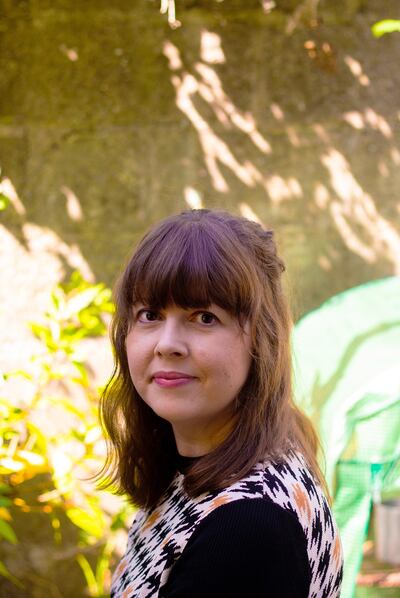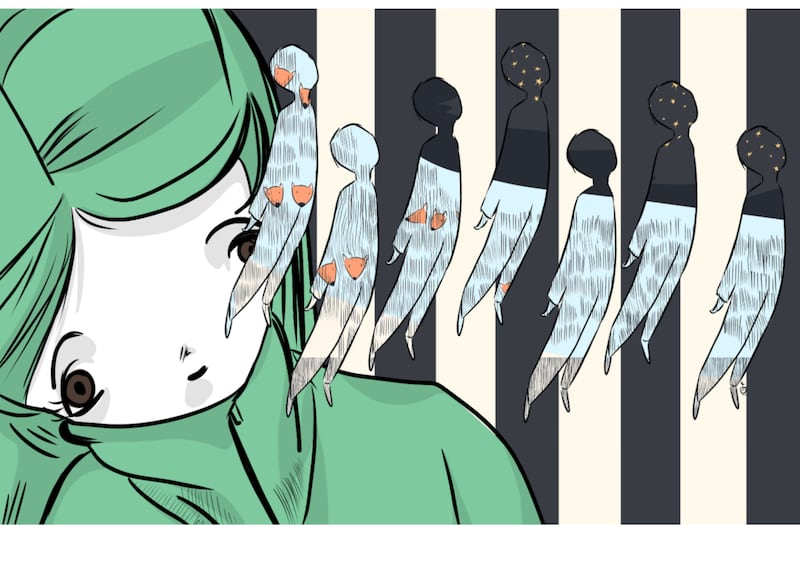“Chronic Pain is NOT Make Believe” is the title of artist Ciara Chapman’s large-scale graphic images hanging from the windows of the Cork Opera House until September 30th. The artwork has a QR code which, when scanned, opens a SoundCloud track describing the image, and the thinking and experiences behind it.
The 40 year old, who has suffered from chronic pain since an accident seven years ago, wants to catch the public’s eye and bring attention to what is often invisible pain, despite being suffered by approximately 13 per cent of people in Ireland. “Chronic pain, whether it is mental, physical or emotional pain, is often invisible but that doesn’t mean it’s not real. It couldn’t be more real to the person experiencing the pain,” says Chapman.

She is keen to dispel any scepticism around chronic pain, as well as any implications or suspicions that the person who suffers is inventing the pain. “Sometimes at our most vulnerable point, our integrity is questioned and that is very disheartening,” says Chapman, who suffered nerve damage in her legs and chronic sciatica after she slipped and fell down the wooden stairs (while wearing woollen socks) in her house in 2015. She continues to use crutches, although surgery to install a spinal stimulator in 2021 brings varying levels of pain relief.
Following her diploma in fine art and printmaking from the Limerick School of Art, Chapman did further studies in graphic design in Cork. A year after her accident, she decided to respond to her pain through art. “I had been dealing with it in a very clinical way for the first year – seeing consultants and getting scans but I was very angry. Then I started drawing and doing my chronic pain diary which initially was purely for myself,” she explains.
READ MORE
Bright colours
Rather than cover canvases in dark gloomy images, Chapman opted to use bright colours and delicate lines in her work. “It’s not all doom and gloom. I also explore the light that comes out of pain, for instance the insight I’ve gained, the self-awareness, the support and the love that I’ve experienced. I prefer the person I am now yet I had to endure the pain to arrive at this point,” she adds.
After Chapman joined the voluntary support group Chronic Pain Ireland, she began sharing her images on Facebook and got a positive response. “Sometimes, I would use a sentence to describe my experience alongside the drawing. It was so personal, I wasn’t expecting it to resonate with others but it did. I have got a lot of feedback from people with autoimmune conditions or from family members who have gained an insight into chronic pain from my work.” Her Chronic Pain Diary was published as a book in 2021.

Chapman says she spends a lot of time alone in her home while her husband is out working. “I never feel like I’m fully in the real world. I feel like I’m somewhere between real and make believe. And because I get so much information from the television, the internet or via phone or text messages, a lot of my world is virtual.” Arguably, these experiences have brought an ethereal cartoon-like quality to many of her images.
‘Fun person’
On a personal level, Chapman says she found great benefit from a cognitive behaviour therapy (CBT) study that she participated in at the National University of Ireland (NUI) in Galway. “When you have chronic pain, you can have overwhelming guilt about the burden you are placing on your family, how you are dragging them down and how you aren’t a fun person to be around.”
But, through her weekly CBT exercises and one-hour session with a counsellor as part of the NUI Galway study, she discovered ways to question her negative self-talk. “I sometimes would have to cancel meeting a friend at the last minute and I’d feel guilty for doing that. But then, I began to change the way I thought about these situations, thinking instead that if someone loves me, they’ll understand and if they don’t, they aren’t the right kind of person to be in my life.”
Chapman’s current project, which is funded by the Arts Council’s Arts and Disability Connect Scheme managed by Arts & Disability Ireland, is accompanied by a public talk by the artist. She will speak about her work at 6pm on Friday, September 23rd, at the Cork Opera House as part of Culture Night. Admission is free but advance booking is necessary (see culturenight.ie). The talk can also be watched on @ciarachapmanillustration for those unable to attend in person.
Meanwhile, Chapman hopes to continue to work in large scale and would be thrilled to have some of her images displayed as street art in Cork on a more permanent basis. “Because I can’t directly paint a mural, I have my drawings printed onto vinyl which is professionally installed. There is so much amazing street art in Cork. It would mean a lot to me to be part of that.”













